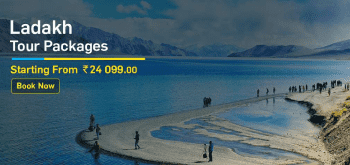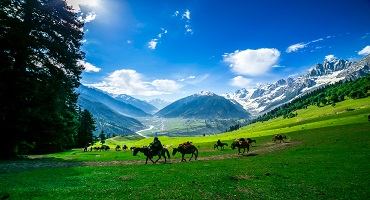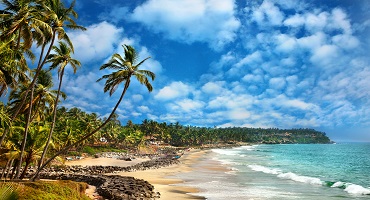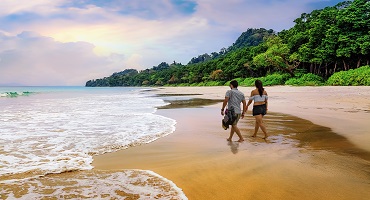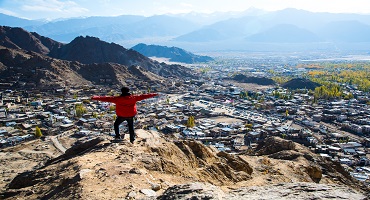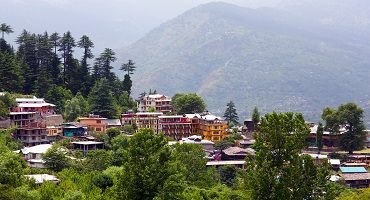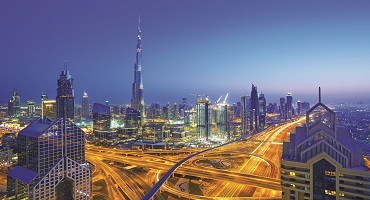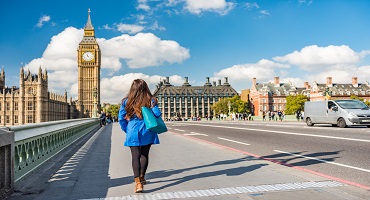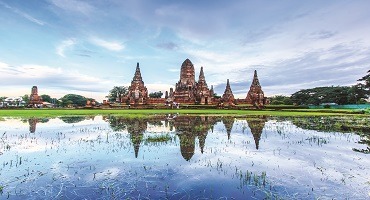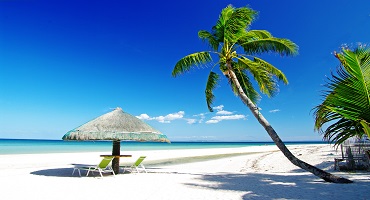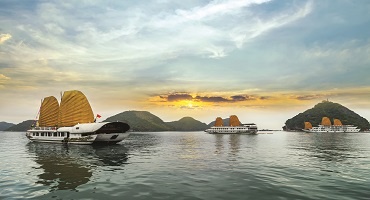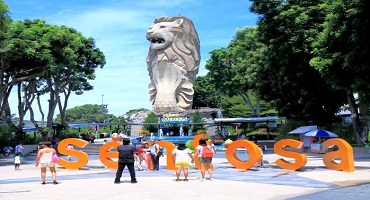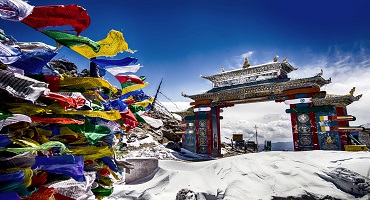A journey into a rich and colourful heritage
Jaisalmer will mesmerise you with its beauty the moment you step in. It is also known as the Golden City of India because of the yellow sandstones that make up most of the buildings in this fort city, This picturesque city in the middle of the Thar Desert witnesses the maximum tourist footfall among all cities in Rajasthan. Its ancient customs and charming traditions have still to fall to the vagaries of time. In fact, stepping inside Jaisalmer is like stepping back in history. Here beautiful architecture rubs shoulders with common people, and heritage accompanies you everywhere you walk. Allow Jaisalmer tourism to sweep you off your feet and show you how the wealthy people of the past lived.
| Jaisalmer Tourism: A Quick View of the City |
| State |
Rajasthan |
| Official Language |
Hindi, Rajasthani |
| Dial Code |
02992 |
| Population |
65,471 |
| Currency |
Indian Rupee (INR) |
| Time Zone |
GMT +5:30 (IST) |
| Area |
5.1 square kilometres |
Highlights: A history like no other
History and heritage
Rajasthan is replete with tales of valour. And the rich history of the state can be found in every city and town. Jaisalmer is one such district that is bountiful in heritage and architectural splendour. You can start to explore Jaisalmer by visiting the main majestic Jaisalmer Fort with its impressive turrets. Counted among the largest forts in the world, this is a sight to behold, especially at night when it is all lit up. Then there the ornate havelis, each resplendent in its own architectural style and unique craftsmanship, that you must visit. Of the main havelis you must include Patwon ki Haveli, Nathmal ki Haveli and Salim Singh ki Haveli. Do not miss Bada Bagh, a stunning architectural wonder that will give you plenty of beautiful photographs. Other places to visit in Jaisalmer include Gadisar Lake, Jain temples and Lodhruva – an ancient city near Jaisalmer – there is just so much to see and absorb here.
Desert adventures
You cannot visit Jaisalmer and give the sand dunes a miss. Take a camel ride and shriek in mock fear as it takes you over the dips and rises of the sand. A jeep safari is another way to do the same thing, but faster and more thrilling. If you visit between February and March, you can witness the beautiful desert festival. The colourful folk dances, camel races, artists and other traditional fanfare will literally blow your mind. Keep your camera charged and ready, because every minute will bring you a new moment to capture. You can also visit Khuri, famous for its sand dunes.
If you are feeling a bit more adventurous, may we suggest a trip to the haunted village of Kuldhara? This deserted village was cursed by its inhabitants as they left in mass exodus, making sure no one ever stays there. Take a trip down history as you walk past its abandoned, crumbling walls.
Markets and shopping
Jaisalmer offers a wholly different shopping experience. There are no malls and high-end boutiques. All your shops are either in the streets or in small stores located in the many bylanes of the city. There are five main markets that you must visit in Jaisalmer and we insist that you go to all. In Jaisalmer famous places to shop in are Manak Chowk, Pansari Bazaar, Sonaron ka Baas, Bhatia Bazaar and Sadar Bazaar, and all quench your thirst for shopping and souvenirs. You can shop for colourful handicrafts, traditional fabric in bags or clothes, popular puppets, or locally-made leather items. Paintings, carpets, jewellery and shoes will complete your shopping expedition.
Cuisine
Unlike other parts of Rajasthan, Jaisalmer does not use much of oils and butters in its cuisine. You can expect to find more of beans, capers and other shredded vegetables. Don’t let this disappoint you because the taste will amaze you. The food here is mildly spiced but you can always request for a milder version if spice isn’t your thing. When in Jaisalmer, you must have the mutton saag at Trio or the murg-e-sabz, a delicious cornucopia of chicken and vegetables cooked in Rajasthani spices. For vegetarians, there are plenty of options as Rajasthani food is mainly vegetarian. The gatte ki sabzi is a dish of besan fritters served in a creamy yogurt curry. Do stop at any roadside eatery for a typical Rajasthani breakfast of pyaaz ki kachori (dough filled with a spicy onion stuffing). And do not miss dal baati choorma. Wash down the meal with a makhania lassi and round off with ghotua laddoos to satiate the sweet tooth.
Interesting Facts about Jaisalmer
- Jaisalmer is one of the only living forts in India.
- It is one of Bollywood’s favourite shooting destinations.
- You will find several deserted, haunted villages around the city.
- India’s most luxurious train, the Palace on Wheels, passes through Jaisalmer.
- The city has one of the largest wind farms in India.
- India’s first nuclear test was done at Pokhran, which is nearby.
Location: Among golden sand dunes
Jaisalmer rises majestically from the heart of the Thar Desert, offering an oasis to all those who wander. The city is surrounded by undulating dunes, and a rocky and rough terrain, which makes living in the city a challenge. However, the locals have managed to overcome these circumstances over the course of centuries. There is no perennial river, and the one flowing water body ends in a lake barely after 28 metres. Rainfall is scant, making the region hot, dry and arid. The district of Jaisalmer abuts Jodhpur, Bikaner and Barmer on the domestic side while it shares borders with Pakistan on the north and north-western frontier.
Click here to view Jaisalmer on Google Map
Timings: Best time to visit
Make your plans for Jaisalmer in winter, between October and March, when the days are comfortable and you can head out sightseeing without burning to a crisp. Winter is the best time to enjoy outdoor activities, like camping, desert safaris, camel rides, etc. And then there is the glorious Jaisalmer Desert Festival that you cannot afford to miss. Nights are chilly, as they are prone to get in a desert, so carry your woollens with you.
Stay away from Jaisalmer from April to June when the city experiences its summer. The days are hot and harsh, with temperatures known to have touched 50 degrees Celsius once. Tourism in Jaisalmer comes to a stop in this extreme weather since it is impossible to step out of air-conditioned comforts.
One would think that the monsoon would make things better, but alas, that is not the case. The rains fall reluctantly on these parched lands between July and September, but even that is not enough to provide any respite from the heat. If anything, the place becomes even more humid.
How to get to Jaisalmer: Getting to the hill fort is easy
By Road - You can drive down to Jaisalmer from Delhi. Do break your journey at Jaipur or Ajmer as you won’t get good accommodation after that until you reach your destination. There are no direct buses, private or state-run. However, you can take a bus up to Jaipur and then switch from there. Remember to book your seat in advance as they are limited.
By Rail - You can book a train to Jaisalmer from nearly all the major cities in India. Once you reach, there are several auto-rickshaws and private taxis waiting outside to take you to your destination.
By Air - The closest airport to Jaisalmer is the Jodhpur airport, which is connected to most Indian cities by regular flights. From there you can take a cab to drive to Jaisalmer which will take 5-6 hours. Jaisalmer does have an airport but it is a military one and supports only chartered flights.
History: Named after a king
Jaisalmer takes its name from Rawal Jaisal, a Bhati ruler who established the city in 1156 AD. Legend goes that Rawal Jaisal, eldest son of the Rawal of Deoraj, was passed over by his father who gave the throne of Laudrava to his younger son, half-brother to Rawal.
Rawal was in the process of founding his own kingdom when he met a sage called Eesul who told him about Krishna’s prophecy that a descendant of his Yaduvanshi clan would one day establish a kingdom here. Even though the prophecy also included two severe battles, Rawal decided to set up base here. He built a mud fort and named it Jaisalmer, which means the Hill Fort of Jaisal.
As forecasted, the kingdom was attacked twice, once by Alauddin Khilji and later by Firuz Shah Tughluq. After the collapse of the Mughal Empire in the 18th century, Jaisalmer came under the umbrella of the Marathas until the East India Company took over.
After independence, Jaisalmer retained its princely status until 1971 after which it was merged into Rajasthan to become part of the greater Indian subcontinent.
Jaisalmer tourism is renowned the world over for its rich and colourful experience. Keep this article handy when you begin planning your vacation.


